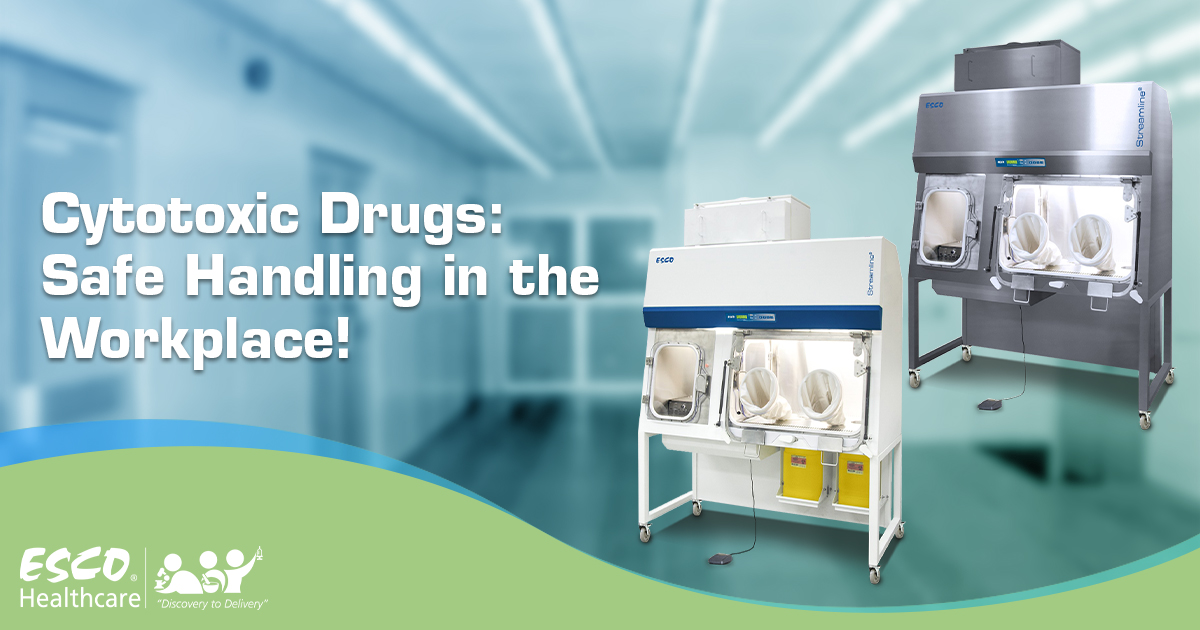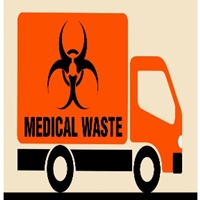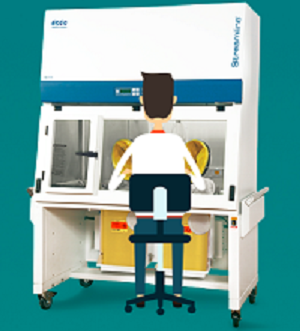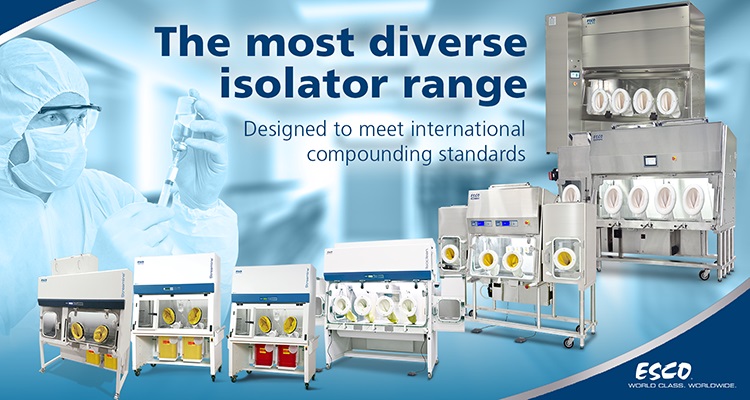Cytotoxic Drugs: Safe Handling in the Workplace!

Cytotoxic drugs
-sometimes known as antineoplastics or chemotherapeutic agents, describe a group of medicines that contain chemicals which are toxic to cells, preventing their replication or growth, and so are primarily used to treat cancer. Once inside the body, their action is not generally tightly targeted, and they can produce side effects both to the patients and others who become exposed.
Potential Health Effects of Cytotoxic Drugs
Current statistics show that one in three people have a life-long risk of developing cancer. There is little scientific evidence currently available relating to whether working with cytotoxic drugs actually increases the risk of developing cancer or not. However, in the absence of such data, a strategy of prudent avoidance is recommended.
In the workplace, occupational exposure may occur where control measures fail or are not in place. Exposure may be through skin contact, skin absorption, inhalation of aerosols and drug particles, ingestion and needle stick injuries resulting from the following activities:

drug preparation |

drug administration |

handling patient waste |

transport and waste disposal, or spills |
Personnel likely to be involved in these activities include:
nurses and medical officers
pharmacists
laboratory staff, and
cleaning, maintenance and waste disposal staff.
Where control measures are not adequate, adverse health effects may result from occupational exposure. Health effects attributed to cytotoxic drugs exposure amongst people preparing and administering cytotoxic drugs include:
abnormal formation of cells and mutagenic activity
alterations to normal blood cell count
foetal loss in pregnant women and malformations in the offspring of pregnant women
abdominal pain, hair loss, nasal sores and vomiting
liver damage, and
contact dermatitis, local toxic or allergic reaction, which may result from direct contact with skin or mucous membranes.
Health effects attributed to exposure to occupational cytotoxic drugs can be very serious. Research shows that where a high standard of risk control is in place, threats to health are reduced.
No exposure limits are set for cytotoxic drugs. Medical opinion is such that even low-level exposure to cytotoxic drugs should be avoided as much as possible. Research has shown that the implementation of suitable safety precautions reduces the incidence of adverse health effects.
Control of Exposure!

Measures to control exposure should be applied in the following order:
Engineering controls:
are plant or processes that reduce the generation of substance, suppress or contain substances, or limit the area of contamination in the event of spills and leaks.

ESCO Streamline Compounding Isolator
- Install ventilation and air-filtering systems such as laminar-flow cytotoxic drug safety cabinets
- Use containment systems such as isolators as they provide rigid product, personnel and environment protection.
- Use wide-bore needles to transfer liquids from containers in the pharmacy
- Use needleless injection sets for drug administration
- Incorporate secure storage facilities
The broad measures described above will include more specific controls, such as:
- reducing the quantities of drugs used; the number of employees potentially exposed; and their duration of exposure, to the minimum;
- ensuring safe handling, storage and transport of cytotoxic drugs and waste material containing or contaminated by them;
- using good hygiene practices and providing suitable welfare facilities, e.g. prohibiting eating, drinking and smoking in areas where drugs are handled and providing washing facilities;
- training staff who handle cytotoxic drugs or deal with contaminated waste, on the risks and the precautions to take.
Isolation:
involves separating people from the substance by distance or barriers to prevent or reduce exposure.
- Adopt closed-system operations
- Conduct drug preparation work in a properly designed and secure cleanroom
- Place dispensed drugs in impermeable packaging for delivery to administration areas
- Designate a cytotoxic drug administration area, which only permits entry to authorized people.
Personal Protective Equipment (PPE)
Personal protective equipment includes:

- coveralls
- gowns
- head covering
- closed footwear
- overshoes
- gloves of appropriate material and thickness
- safety glasses
- respiratory protective devices
PPE should be provided and used wherever risks cannot be adequately controlled in other ways. PPE should be selected based on your risk assessment. It is important that the PPE offers adequate protection for its intended use. Employees must be trained in the use of PPE and it must be adequately maintained and stored.
Our equipment provides a comprehensive range of personnel and product protection in addition to protection for the surrounding work areas and the environment.

Product Environment Protection?
Worry No More! Esco Pharma has the Solution!
References:
Safe Handling of Cytotoxic Drugs in the Workplace. [ONLINE] Available at: http://www.hse.gov.uk/healthservices/safe-use-cytotoxic-drugs.htm. (Accessed 14 October 2016)
Worksafe Victoria: Handling Cytotoxic Drugs in the Workplace. [ONLINE] Available at: https://www.worksafe.vic.gov.au/__data/assets/pdf_file/0010/12223/handling_cytotoxic.pdf.. (Accessed 14 October 2016)





